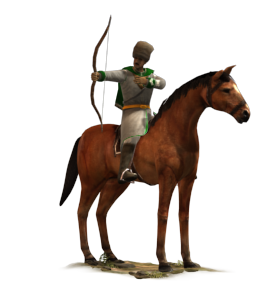Difference between revisions of "Tatars (ETW Unit)"
Tango12345 (talk | contribs) m (updating category) |
|||
| Line 1: | Line 1: | ||
| − | These light cavalrymen are superb horsemen, expert in skirmishing and harassing an enemy. | + | These light cavalrymen are superb horsemen, expert in skirmishing and harassing an enemy. Tatars are cavalry archers that are useful for early skirmishing, although they are torn to pieces in direct engagements. |
{{Unit|image=[[Image:Tatars.png]]|Class= Missile Cavalry | {{Unit|image=[[Image:Tatars.png]]|Class= Missile Cavalry | ||
Revision as of 20:54, 3 September 2011
These light cavalrymen are superb horsemen, expert in skirmishing and harassing an enemy. Tatars are cavalry archers that are useful for early skirmishing, although they are torn to pieces in direct engagements.
Overview
There is a long tradition on the steppes of fighting from horseback. Children are put in the saddle before they can walk, and this makes them almost part of the horse. In previous centuries, accurately firing a bow while riding at speed requires a man who has exceptional ability with both the weapon and a horse. Steppe warriors can control their horses using their knees, and without the need to hold the reins they can use weapons easily and well. Their tactics have always involved galloping up to a slower enemy, delivering a devastating volley, and then riding away again. This way of warfare has survived in the era of pistols and muskets, although most steppe warriors carry numerous weapons (if they can) to avoid reloading in the heat of battle.
Historically, all the eastern nations had an ambiguous relationship with the steppe peoples. They both feared them and wanted their services. This allowed the more cunning steppe tribes to keep a measure of autonomy when other β€nativesβ€ were being ruthlessly crushed.
